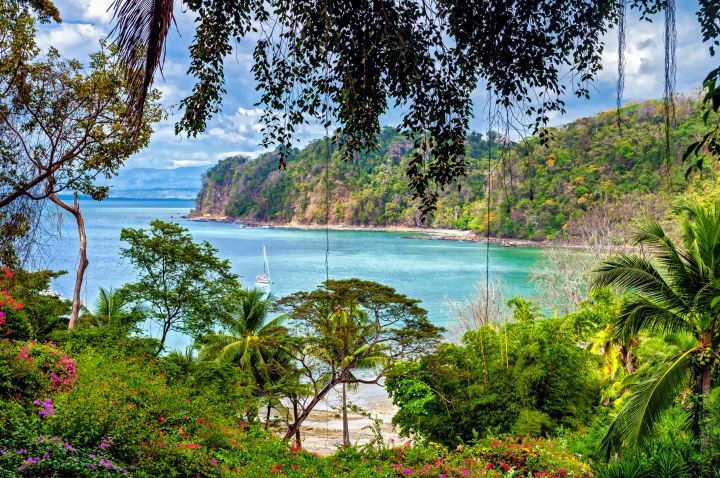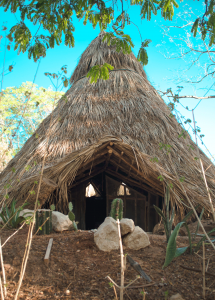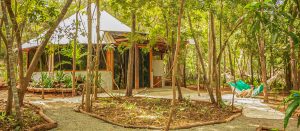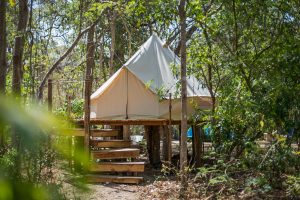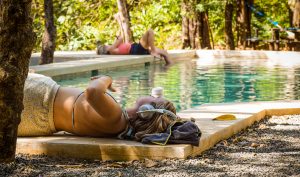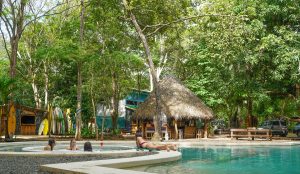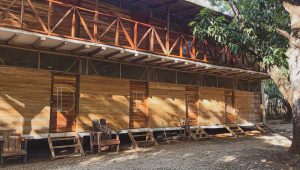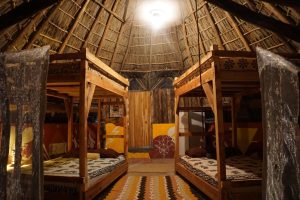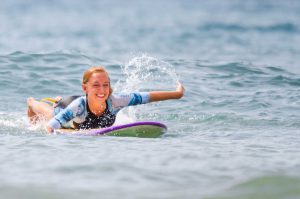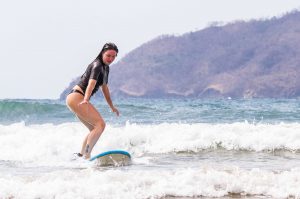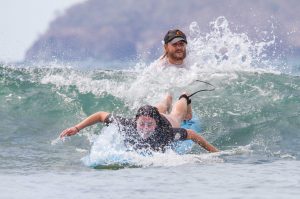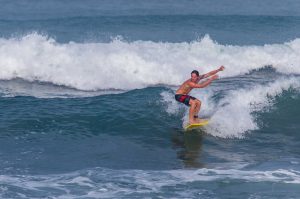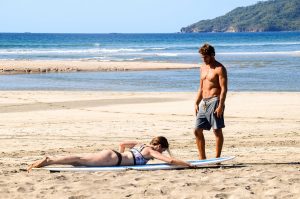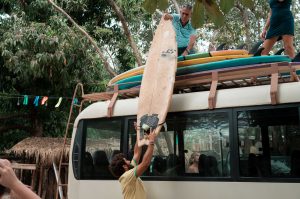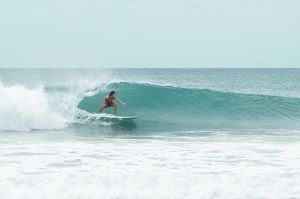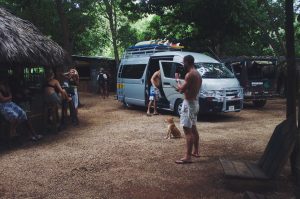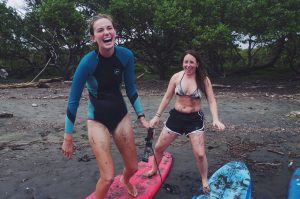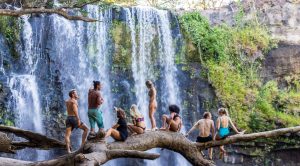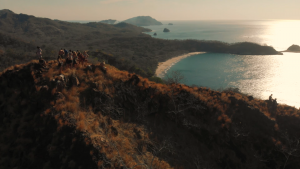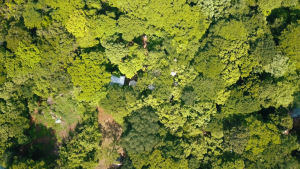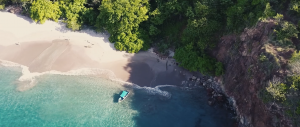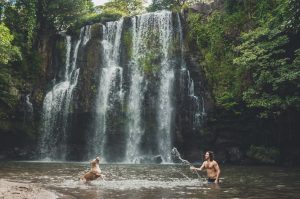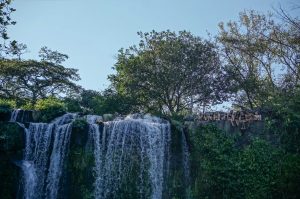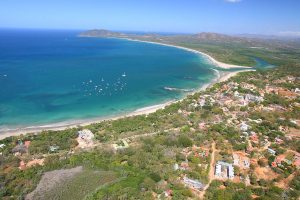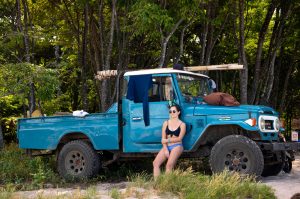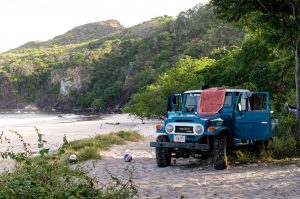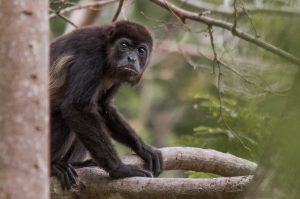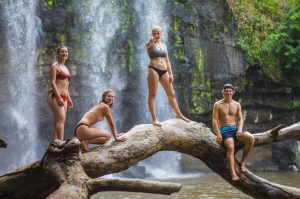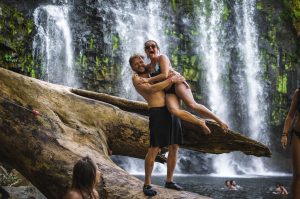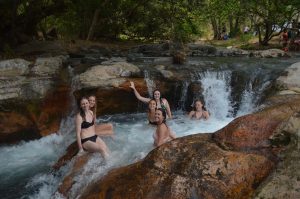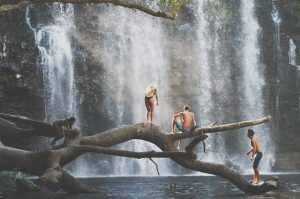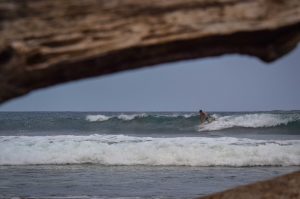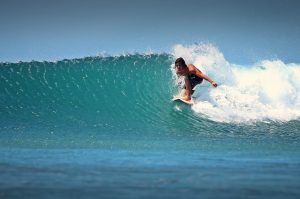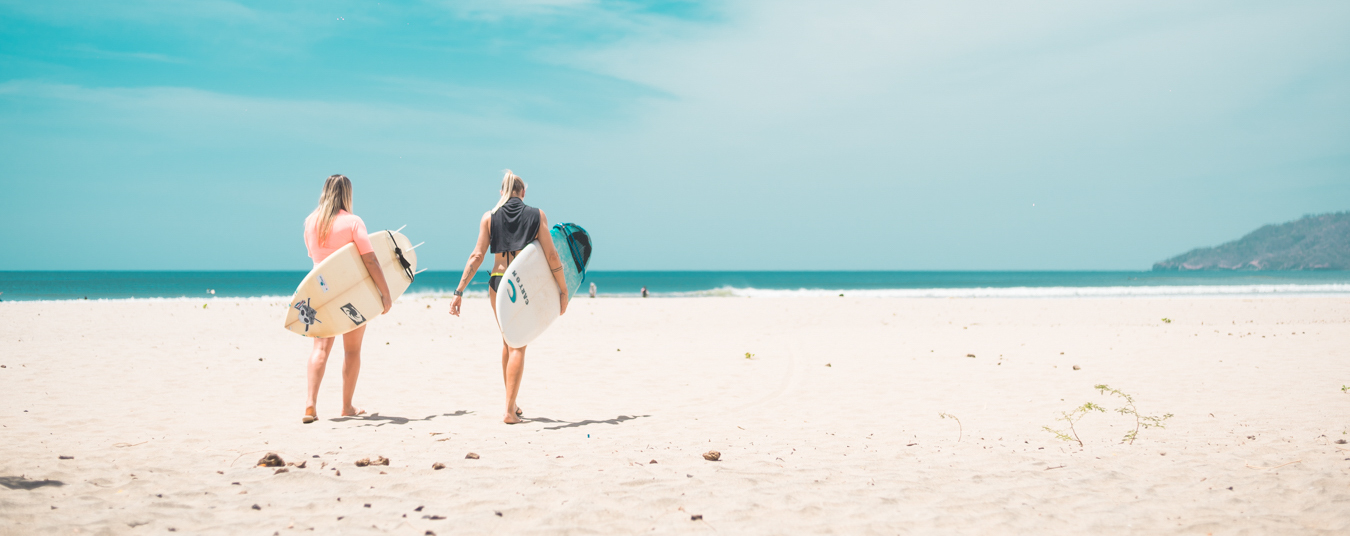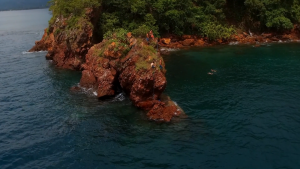THE ULTIMATE COSTA RICA SURF GUIDE
Dreamsea Surf Camp Costa Rica
-
-
- Introduction to Costa Rica Surfing
- How to get to Costa Rica?
- Getting around Costa Rica
- Dreamsea Surf Camp – Top Costa Rica Surf Destination
- Best time to surf in Costa Rica
- What is there to do when you aren’t surfing in Costa Rica?
- Frequently Asked Questions about Dreamsea Surf Camp and Costa Rica Surfing
-
Introduction to Costa Rica Surfing
Let’s start with Dreamsea Surf Camp Costa Rica
In this Ultimate Costa Rica Surf Guide we will be centered around Dreamsea Surf Camp in Tamarindo, Costa Rica. Dreamsea is a premier destination for surfers of all skill levels seeking an immersive surfing experience. Located in the picturesque region of Guanacaste on the Pacific Coast, Dreamsea offers a unique blend of high-quality surf instruction, comfortable accommodations, and a vibrant community atmosphere.
The Ultimate Costa Rica Surf Guide – Facilities and Accommodation
fDreamsea Surf Camp provides an eco-friendly glamping experience, with accommodations ranging from shared tents to private suites, all nestled within the lush tropical jungle. The camp is designed to harmonize with its natural surroundings, offering a rustic yet comfortable stay. Amenities include a communal dining area, yoga deck, swimming pool, and relaxation areas with hammocks and lounge chairs. The camp fosters a sense of community through organized activities, group meals, and evening entertainment.
The Ultimate Costa Rica Surf Guide – Surf Instruction and Equipment
Dreamsea offers tailored surf lessons led by experienced instructors who cater to all levels, from beginners to advanced surfers. Lessons are held in small groups to ensure personalized attention and safety. The camp provides all necessary equipment, including surfboards and wetsuits. Surf theory sessions complement practical lessons, helping participants understand wave dynamics, surf etiquette, and ocean safety. Just one of the few amenities when it comes to the ultimate costa rica surf guide.
The Ultimate Costa Rica Surf Guide – Popular Surf Spots Around Tamarindo
When it comes to the ultimate costa rica surf guide, we can’t leave out Tamarindo. Tamarindo is renowned for its diverse and consistent surf breaks, making it a hotspot for surfers worldwide. Here are some of the most popular surf spots in and around Tamarindo:
Tamarindo Beach
Tamarindo Beach itself is one of the most popular surf spots in the area. It offers a variety of waves suitable for all skill levels, from gentle beach breaks for beginners to more challenging sections for advanced surfers. The long, sandy beach provides plenty of space for surfers to spread out and enjoy the waves.
Playa Grande
Just north of Tamarindo, Playa Grande is famous for its powerful and consistent waves. This beach is part of the Las Baulas National Marine Park, known for its pristine conditions and natural beauty. Playa Grande is ideal for more experienced surfers looking for larger and faster waves.
Playa Langosta
Located a short distance south of Tamarindo, Playa Langosta offers a more secluded and less crowded surfing experience. The waves here are powerful and suitable for intermediate to advanced surfers. The rocky bottom and reef breaks create challenging and rewarding conditions.
Avellanas
Playa Avellanas, a 30-minute drive from Tamarindo, is a favorite among surfers for its consistent waves and beautiful scenery. Known as “Little Hawaii” Avellanas features multiple breaks, including the famous “Lola’s” wave, named after a local beach bar. This spot caters to all levels of surfers, with different peaks offering varying degrees of difficulty within this ultimate costa rica surf guide.
Playa Negra
Playa Negra, about an hour’s drive from Tamarindo, is a legendary surf spot known for its world-class right-hand reef break. The waves here are powerful and fast, making it a go-to destination for advanced surfers. The crystal-clear water and scenic coastline add to the allure of this iconic surf spot.
The Ultimate Costa Rica Surf Guide – Why Costa Rica is a Top-Rated Spot for Surfing
The Ultimate Costa Rica Surf Guide – Consistent Waves and Varied Surf Breaks
Ultimate Costa Rica Surf Guide is blessed with consistent waves year-round, thanks to its strategic location between the Pacific Ocean and the Caribbean Sea. The country’s coastline features a wide variety of surf breaks, including beach breaks, point breaks, and reef breaks, catering to surfers of all levels.
The Ultimate Costa Rica Surf Guide – Warm Water and Ideal Climate
The warm tropical climate and water temperatures ranging from 77°F to 85°F (25°C to 29°C) make surfing in Costa Rica a comfortable and enjoyable experience. There’s no need for wetsuits, which adds to the appeal for many surfers.
The Ultimate Costa Rica Surf Guide – Stunning Natural Beauty
Costa Rica’s beaches are surrounded by lush rainforests, volcanic landscapes, and rich biodiversity, making it a paradise for nature lovers. Surfing here means being immersed in stunning natural settings, with opportunities to spot wildlife like howler monkeys, iguanas, and exotic birds.
The Ultimate Costa Rica Surf Guide – Surf Culture and Community
Inside our Ultimate Costa Rica Surf Guide, it should be established by now that Costa Rica has a vibrant surf culture, with a friendly and welcoming community of surfers from around the world. Surf camps, schools, and shops are abundant, providing plenty of resources for learning and improving surfing skills. The local Ticos (Costa Ricans) are known for their hospitality and Pura Vida (pure life) philosophy, which adds to the positive vibe.
The Ultimate Costa Rica Surf Guide – Accessibility and Infrastructure
Costa Rica has well-developed tourism infrastructure, making it easy to travel to and within the country. International airports in San José and Liberia offer convenient access, and many surf towns, including Tamarindo, have a range of accommodations, restaurants, and services catering to surfers.
CLICK TO GO BACK TO TOP OF PAGE
How To Get To Costa Rica
The Ultimate Costa Rica Surf Guide – Best Ways to Travel to Costa Rica from Another Country
From the United States to Costa Rica
-
Direct Flights
- Major Airlines: Several major airlines offer direct flights from various cities in the United States to Costa Rica. These include American Airlines, Delta, United, JetBlue, Southwest, and Alaska Airlines.
- Main Airports in Costa Rica:
- Juan Santamaría International Airport (SJO): Located near San José, the capital city.
- Daniel Oduber Quirós International Airport (LIR): Located in Liberia, in the Guanacaste region, close to popular beach destinations like Tamarindo. Popular Departure Cities: Los Angeles, Miami, Houston, Dallas, New York City, and Atlanta have frequent direct flights to SJO and LIR.
-
Connecting Flights
- Connecting via Major Hubs: If a direct flight is not available from your departure city, consider connecting flights through major hubs such as Miami, Houston, Atlanta, or Dallas. These cities have frequent flights to Costa Rica, making connections relatively easy.
- Advantages: Connecting flights can sometimes be cheaper, and they offer more flexibility in terms of departure times and routes.
From Additional Countries
1. Canada to Costa Rica
– Direct Flights: Airlines like Air Canada and WestJet offer direct flights from major cities such as Toronto, Vancouver, and Montreal to Costa Rica.
– Connecting Flights: Connections through U.S. hubs (e.g., Miami, Houston) are also common and can provide more flight options.
2. Mexico
– Direct Flights: Airlines such as Aeroméxico and Volaris offer direct flights from Mexico City to Costa Rica.
– Short Travel Time: The proximity of Mexico to Costa Rica makes travel relatively quick and convenient.
3. Central America
– Regional Airlines: Airlines like Avianca and Copa Airlines offer frequent flights between Costa Rica and other Central American countries such as Guatemala, Panama, and El Salvador.
– Bus Travel: For a more economical option, long-distance buses connect Costa Rica with neighboring countries, though travel times are significantly longer compared to flights.
From Other Continents
1. Europe
– Direct Flights: Airlines such as Iberia (from Madrid), British Airways (from London), and Lufthansa (from Frankfurt) offer direct flights to Costa Rica.
– Connecting Flights: Many European travelers connect through major U.S. hubs (Miami, Houston) or other international hubs like Mexico City or Bogotá.
– Travel Time: Direct flights from Europe to Costa Rica typically take around 10-12 hours.
2. South America
– Direct Flights: Avianca, LATAM, and Copa Airlines offer direct flights from major South American cities like Bogotá, Lima, and São Paulo to Costa Rica.
– Connecting Flights: Connecting through hubs like Panama City or Bogotá is common and provides more flight options.
3. Asia and Oceania
– Connecting Flights: Travelers from Asia and Oceania usually connect through major international hubs such as Los Angeles, San Francisco, or Miami in the U.S., or via European hubs like Madrid or Frankfurt.
– Extended Travel Time: Due to the long distances, expect travel times of 20+ hours, including layovers.
The Ultimate Costa Rica Surf Guide – Tips for Planning Your Travel
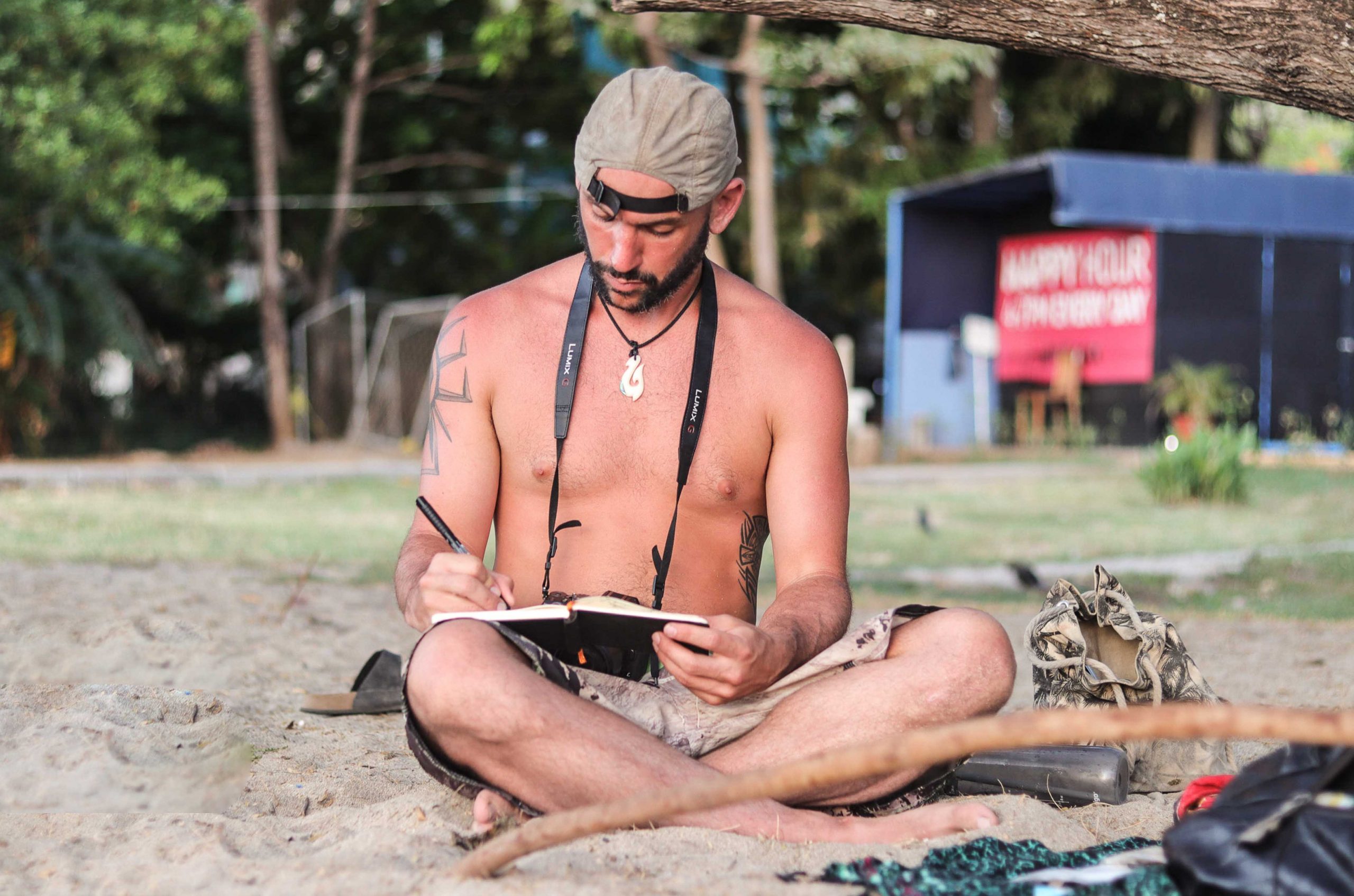
1. Booking in Advance: Booking flights several months in advance can help secure better deals and ensure availability, especially during peak travel seasons.
2. Flexible Dates: If your travel dates are flexible, use fare comparison websites to find the cheapest days to fly.
3. Visa Requirements: Check visa requirements for Costa Rica based on your nationality. U.S. citizens typically do not need a visa for stays up to 90 days.
4. Travel Insurance: Consider purchasing travel insurance to cover any unforeseen events such as flight cancellations, medical emergencies, or lost luggage.
5. Health Precautions: Ensure you are up-to-date with any necessary vaccinations and check for any health advisories related to travel to Costa Rica.
By considering these options and tips, you can plan a smooth and enjoyable journey to Costa Rica, whether you’re traveling from the United States, another North American country, or from a different continent altogether.
CLICK TO GO BACK TO TOP OF PAGE
Best Ways to Get Around and Sightsee in Costa Rica
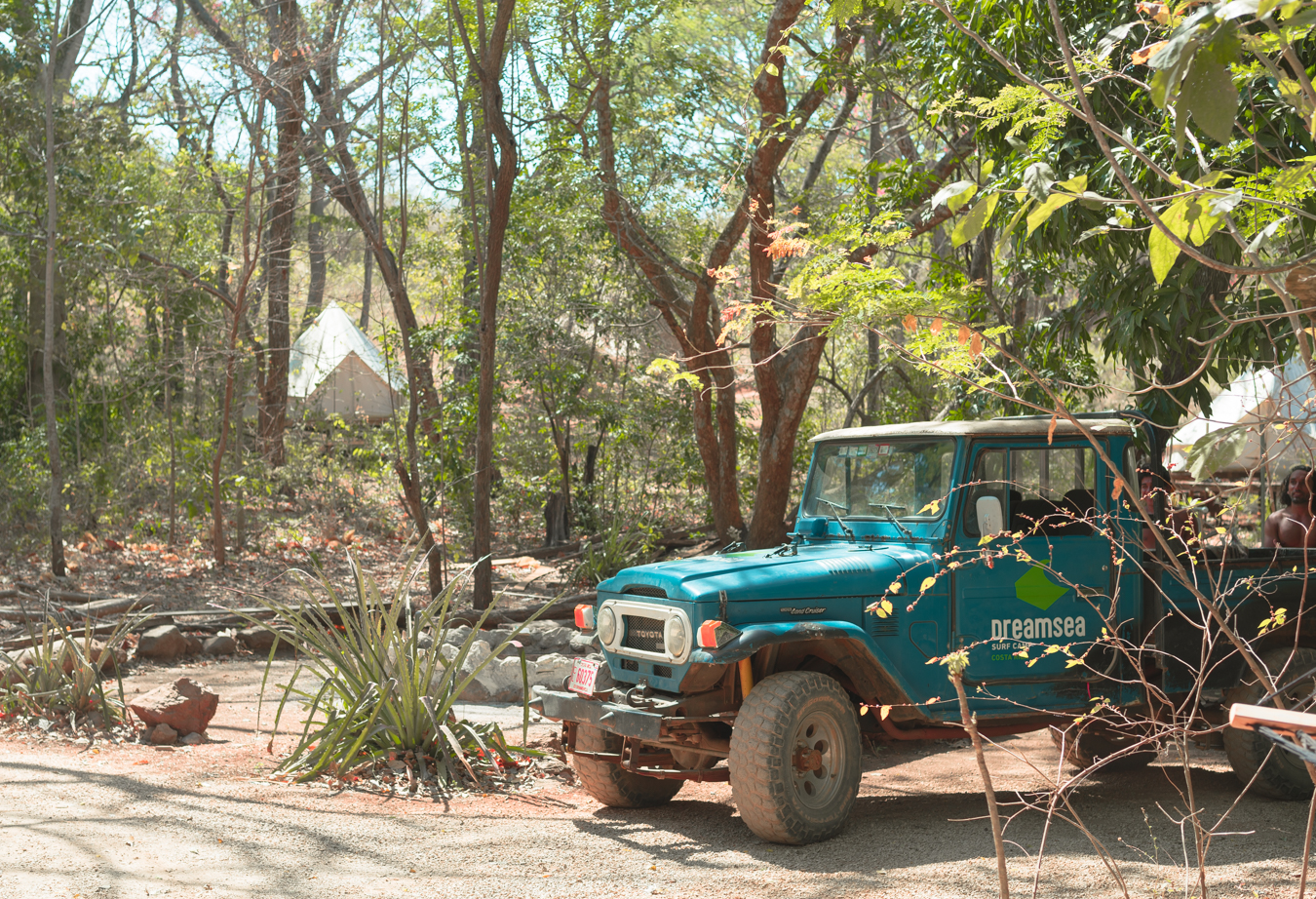
1. Rental Cars
– Flexibility and Convenience: Renting a car offers the greatest flexibility for exploring Costa Rica at your own pace. You can visit remote beaches, national parks, and small towns that are not easily accessible by public transportation.
– Rental Companies: Major international rental companies such as Alamo, Hertz, Budget, and local companies like Adobe Rent a Car operate in Costa Rica.
– Driving Conditions: Be prepared for varying road conditions, including unpaved roads, especially in rural areas. A 4×4 vehicle is recommended for accessing remote locations.
– Cost: Rental prices vary but expect to pay around $30-$70 per day, depending on the vehicle type and season. Additional insurance is often required.
2. Public Buses
– Affordability: Buses are the most economical way to travel around Costa Rica, with fares typically ranging from $1 to $20 depending on the distance.
– Coverage: The public bus system is extensive, covering major cities, towns, and popular tourist destinations.
– Comfort: Long-distance buses are relatively comfortable and often air-conditioned. However, travel times can be lengthy due to frequent stops and indirect routes.
– Main Companies: Companies like Tracopa, Tica Bus, and Interbus offer reliable services.
3. Shuttle Services
– Convenience: Shared and private shuttle services offer door-to-door transportation between popular destinations, such as San José, Liberia, Manuel Antonio, Arenal, and Tamarindo.
– Cost: Shared shuttles are moderately priced, around $30-$60 per person per trip, while private shuttles are more expensive but offer exclusive use of the vehicle.
– Booking: Shuttle services can be booked online or through hotels and travel agencies.
4. Domestic Flights
– Speed: Domestic flights are the fastest way to travel long distances within Costa Rica, significantly reducing travel time compared to driving.
– Airlines: Local airlines like Sansa and Aerobell connect major destinations such as San José, Liberia, Quepos, Tamarindo, and Drake Bay.
– Cost: Flights are relatively affordable, usually ranging from $50 to $150 one-way.
– Airport Locations:** Many domestic flights operate out of smaller regional airports, which are often closer to tourist destinations.
5. Taxis and Ride-Sharing
– Short Distances: Taxis and ride-sharing services like Uber are ideal for short trips within cities or to nearby attractions.
– Availability: Taxis are widely available in urban areas and popular tourist spots. Uber operates mainly in San José and surrounding areas.
– Cost: Taxis are metered, but it’s advisable to agree on a fare beforehand for longer trips. Uber fares are generally lower than taxi rates.
6. Bicycles and Motorbikes
– Active Exploration: Biking is a great way to explore certain areas, especially coastal towns and national parks. Motorbikes offer more speed and range.
– Rentals: Bicycles and motorbikes can be rented from shops in tourist areas like Tamarindo, Monteverde, and Puerto Viejo.
– Cost: Bicycle rentals typically cost $10-$20 per day, while motorbikes range from $25-$60 per day.
– Safety: Always wear a helmet and be cautious of road conditions and traffic.
7. Guided Tours
– Expert Guidance: Guided tours provide expert knowledge and hassle-free transportation to top attractions such as Arenal Volcano, Monteverde Cloud Forest, and Manuel Antonio National Park.
– Types of Tours: Options range from day trips to multi-day excursions, including hiking, wildlife watching, and cultural tours.
– Cost: Prices vary widely depending on the tour length and inclusions, typically ranging from $50 to several hundred dollars.
– Booking: Tours can be booked through travel agencies, hotels, or online platforms like Viator and GetYourGuide.
The Ultimate Costa Rica Surf Guide – Sightseeing Recommendations
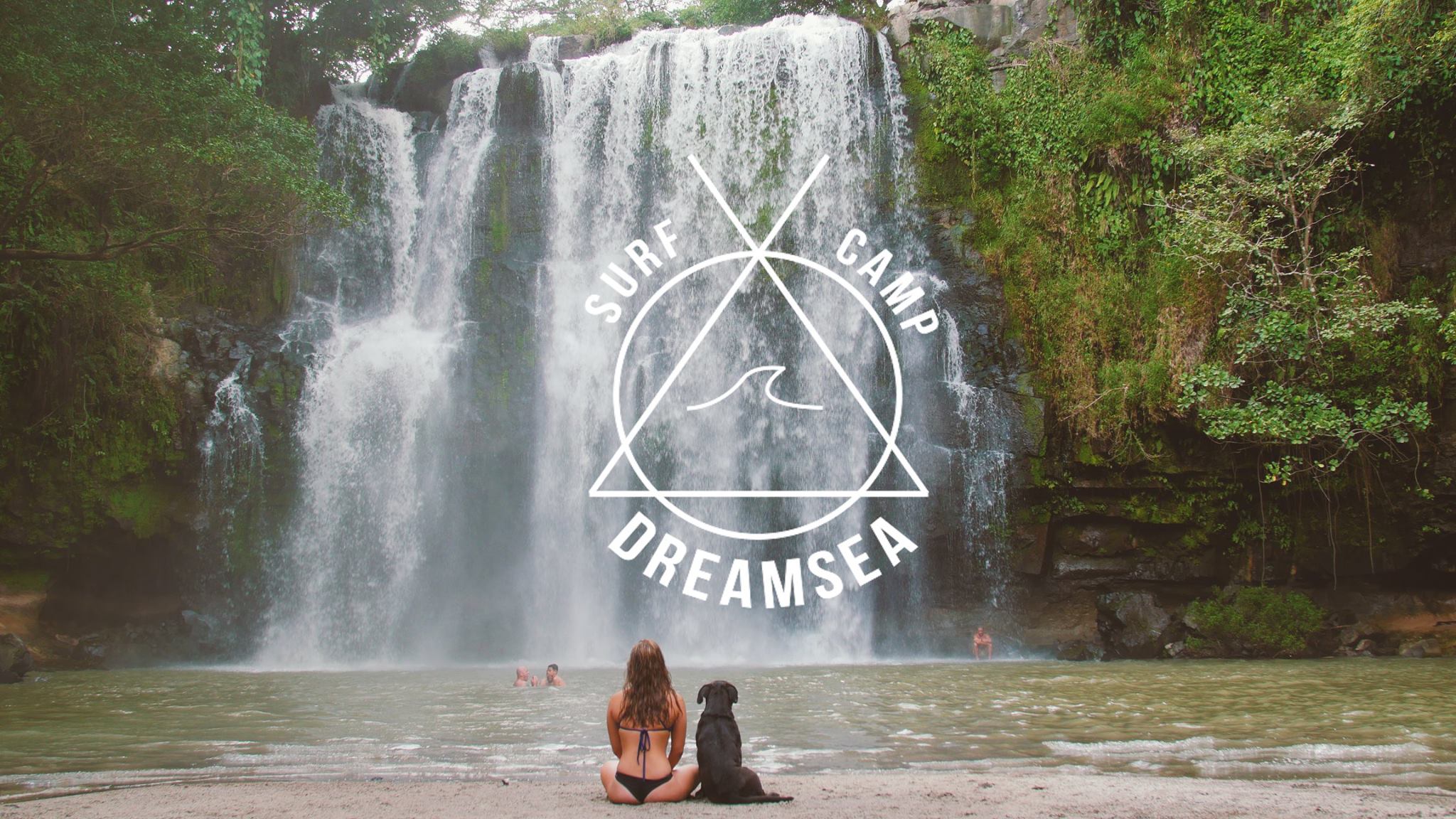
1. Arenal Volcano and La Fortuna
– Activities: Hot springs, zip-lining, hiking, and wildlife tours.
– Transportation: Accessible by rental car, shuttle, or guided tour from San José or Liberia.
2. Monteverde Cloud Forest
– Activities: Canopy tours, hanging bridges, bird watching.
– Transportation: Shuttle services and guided tours are recommended due to challenging road conditions.
3. Manuel Antonio National Park
– Activities: Beach relaxation, wildlife viewing, hiking.
– Transportation: Accessible by rental car, public bus, or shuttle from San José.
4. Tamarindo and Guanacaste Beaches
– Activities: Surfing, snorkeling, beach hopping.
– Transportation: Best accessed by rental car or shuttle from Liberia Airport.
5. Tortuguero National Park
– Activities: Turtle watching, boat tours, wildlife excursions.
– Transportation: Accessible by boat and small plane; guided tours are popular.
By choosing the right mode of transportation and planning your itinerary, you can make the most of your time exploring the diverse landscapes and attractions Costa Rica has to offer.
CLICK TO GO BACK TO TOP OF PAGE
Dreamsea Surf Camp – Top Costa Rica Surf Destination
Unique Glamping Experience in a Tropical Paradise
Dreamsea Surf Camp Costa Rica offers an unparalleled surf experience, combining high-quality instruction with luxurious glamping accommodations set in the lush tropical jungle of Tamarindo. Unlike traditional surf camps, Dreamsea provides a unique blend of comfort and adventure, allowing guests to stay in stylish tents that seamlessly blend with the natural surroundings. This eco-friendly approach not only enhances the connection to nature but also ensures a serene and immersive atmosphere, making it the perfect retreat for surf enthusiasts looking to escape the hustle and bustle of everyday life.
Prime Location with Access to Top Surf Spots
Strategically located in Tamarindo, Dreamsea Surf Camp provides easy access to some of Costa Rica’s most renowned surf spots. Tamarindo Beach, known for its consistent waves suitable for all skill levels, is just a short distance away. For those seeking more challenging breaks, Playa Grande and Playa Langosta are nearby, offering powerful waves ideal for intermediate to advanced surfers. Additionally, excursions to surf spots like Playa Avellanas and Playa Negra can be easily arranged, allowing guests to explore and conquer a variety of surf conditions. The camp’s prime location ensures that surfers can enjoy the best waves Costa Rica has to offer without the hassle of long commutes.
Vibrant Community and Comprehensive Surf Instruction
Dreamsea Surf Camp is more than just a place to surf; it’s a vibrant community where like-minded individuals come together to share their passion for surfing and the ocean. The camp offers comprehensive surf instruction tailored to all levels, from beginners taking their first steps on a board to advanced surfers honing their skills. Experienced instructors provide personalized guidance, ensuring that each guest improves their technique and gains confidence in the water. Beyond surfing, the camp fosters a sense of camaraderie through communal meals, yoga sessions, and social activities, creating lasting bonds and unforgettable memories. This combination of exceptional surf instruction, prime location, and community spirit makes Dreamsea Surf Camp the best surf destination in Costa Rica.
CLICK TO GO BACK TO TOP OF PAGE
Best Times to Surf in Costa Rica
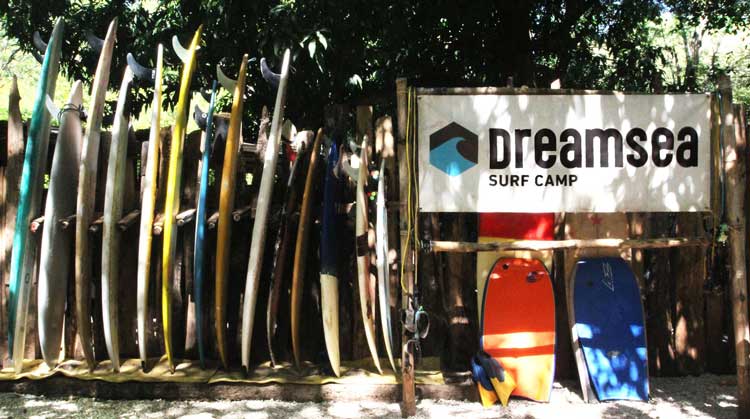
Dreamsea Surf Camp Costa Rica – Contact – Surfing, Glamping, Yoga – Tamarindo, Costa Rica
The Ultimate Costa Rica Surf Guide – Optimal Seasons
1. High Season (December to July)
– Overview: The dry season is one of the best times for surfing in Costa Rica, particularly on the Pacific Coast. The weather is warm and sunny, with little to no rain, making it ideal for outdoor activities.
– Waves: Consistent and manageable, ideal for all levels of surfers. The offshore winds, especially in the morning, create clean and well-formed waves.
– Crowds: This is the peak tourist season, so popular surf spots can be crowded, especially during holidays like Christmas and Easter.
2. Green Season (August to November)
– Overview: The rainy season, also known as the green season, brings lush landscapes and fewer tourists. While there are more frequent showers, they usually occur in the afternoons, leaving mornings clear for surfing.
– Waves: Larger and more powerful, particularly from June to September. This is the best time for experienced surfers seeking bigger swells.
– Crowds: Fewer tourists mean less crowded surf spots, offering a more serene experience.
Best Months
1. December to April (High Season)
– January and February: Ideal for beginners and intermediates due to consistent and gentle waves.
– March and April: Transitioning into slightly bigger swells, suitable for all skill levels.
2. May to November (Green Season)
– June to August: Peak for larger swells, attracting advanced surfers. The surf competitions often take place during these months.
– September and October: The waves are at their largest, but these months also see the most rainfall, which can affect road conditions and accessibility.
Best Time of Day
1. Early Morning
– Conditions: Offshore winds create the best wave conditions, with clean and glassy waves. The water is generally calmer, and the beaches are less crowded.
– Light and Temperature: Cooler temperatures and softer sunlight make for a pleasant surfing experience.
2. Late Afternoon
– Conditions: The winds often shift back offshore, improving wave quality. However, this can vary depending on the specific location.
– Crowds: Fewer surfers than in the late morning or early afternoon, offering a more peaceful session.
Summary
– High Season (December to April): Best for beginners and intermediate surfers due to consistent, manageable waves and optimal weather.
– Green Season (May to November): Best for advanced surfers seeking larger swells, with fewer crowds and a more lush environment.
– Early Morning and Late Afternoon: Best times of day for optimal wave conditions and fewer crowds, with early mornings offering the most consistent offshore winds.
By considering these seasonal and daily patterns, surfers can plan their trips to Costa Rica to make the most of the incredible waves and beautiful coastal landscapes.
CLICK TO GO BACK TO TOP OF PAGE
What is There To Do When You Aren’t Surfing in Costa Rica?
Costa Rica offers a plethora of activities and attractions for visitors when they aren’t hitting the waves. From exploring lush rainforests and relaxing in hot springs to wildlife watching and zip-lining through the canopy, there’s something for everyone. Here are some of the top things to do in Costa Rica when you’re not surfing:
The Ultimate Costa Rica Surf Guide – Nature and Wildlife Activities

1. Exploring National Parks
– Manuel Antonio National Park: Known for its beautiful beaches, hiking trails, and abundant wildlife, including monkeys, sloths, and diverse bird species.
– Corcovado National Park: Located on the Osa Peninsula, it’s one of the most biodiverse places on the planet, perfect for adventurous hikes and wildlife spotting.
– Tortuguero National Park: Famous for its canals, river systems, and turtle nesting sites, offering guided boat tours and wildlife-watching opportunities.
2. Wildlife Watching
– Monteverde Cloud Forest Reserve: Ideal for bird watching, including sightings of the resplendent quetzal, as well as exploring the unique cloud forest ecosystem.
– Cahuita National Park: Offers excellent opportunities to see sloths, monkeys, and a variety of marine life while snorkeling in its coral reefs.
– Osa Peninsula: A haven for nature lovers, where you can see rare species and enjoy guided wildlife tours.
The Ultimate Costa Rica Surf Guide – Adventure Activities
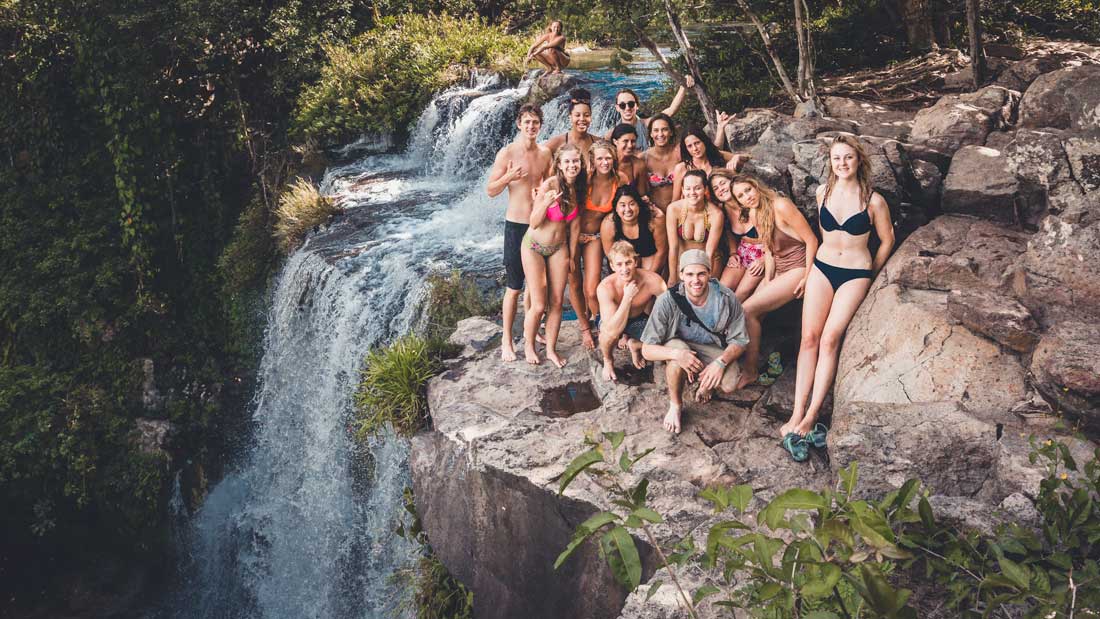
Dreamsea Surf Camp Costa Rica – Book Now – Surfing, Glamping, Yoga – Tamarindo, Costa Rica
1. Zip-lining and Canopy Tours
– Monteverde and Arenal: Both regions offer world-class zip-lining experiences, allowing you to soar above the treetops and enjoy breathtaking views of the forest canopy.
2. Hiking and Trekking
– Arenal Volcano: Offers numerous trails with stunning views of the volcano and surrounding rainforest, as well as a variety of difficulty levels.
– Rincón de la Vieja: Features diverse landscapes, including volcanic craters, waterfalls, and hot springs, with several well-marked hiking trails.
3. White-water Rafting
– Pacuare River: Considered one of the best rivers in the world for white-water rafting, offering thrilling rapids and scenic views.
– Savegre River: Suitable for beginners and families, with gentler rapids and beautiful surroundings.
The Ultimate Costa Rica Surf Guide – Relaxation and Wellness
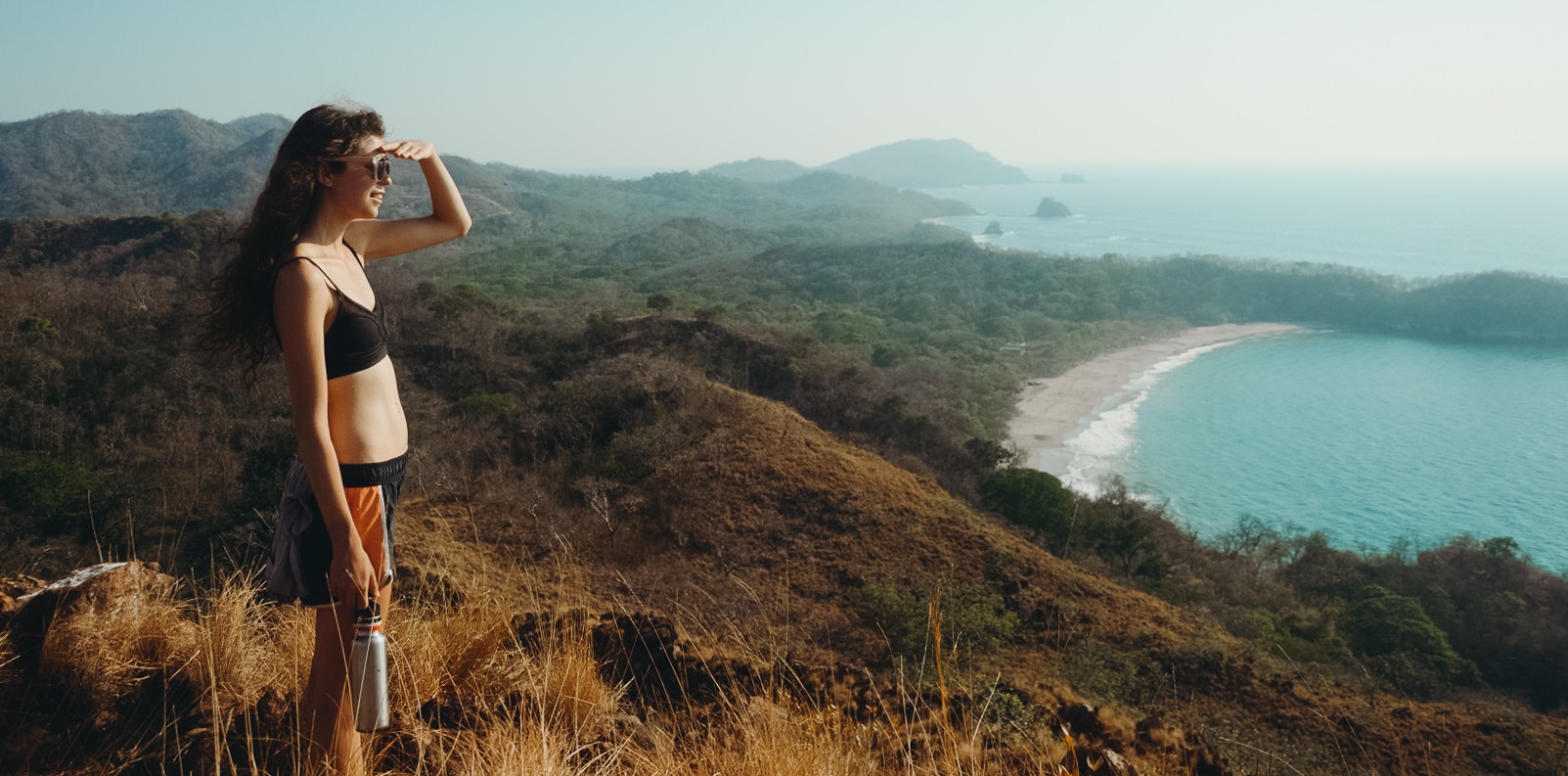
1. Hot Springs
– Arenal Hot Springs: Numerous resorts and natural hot springs in the Arenal area, such as Tabacón and Baldi, offer relaxing thermal baths set in lush tropical gardens.
– Rincón de la Vieja: Natural hot springs and mud baths are available in this geothermal region, perfect for a soothing experience after a hike.
2. Beaches
– Tamarindo Beach: Beyond surfing, Tamarindo offers beautiful sunsets, beachside dining, and opportunities for snorkeling and paddleboarding.
– Santa Teresa and Malpais: Known for their laid-back vibe, these beaches are great for yoga retreats, beachcombing, and enjoying the local culinary scene.
The Ultimate Costa Rica Surf Guide – Cultural and Local Experiences
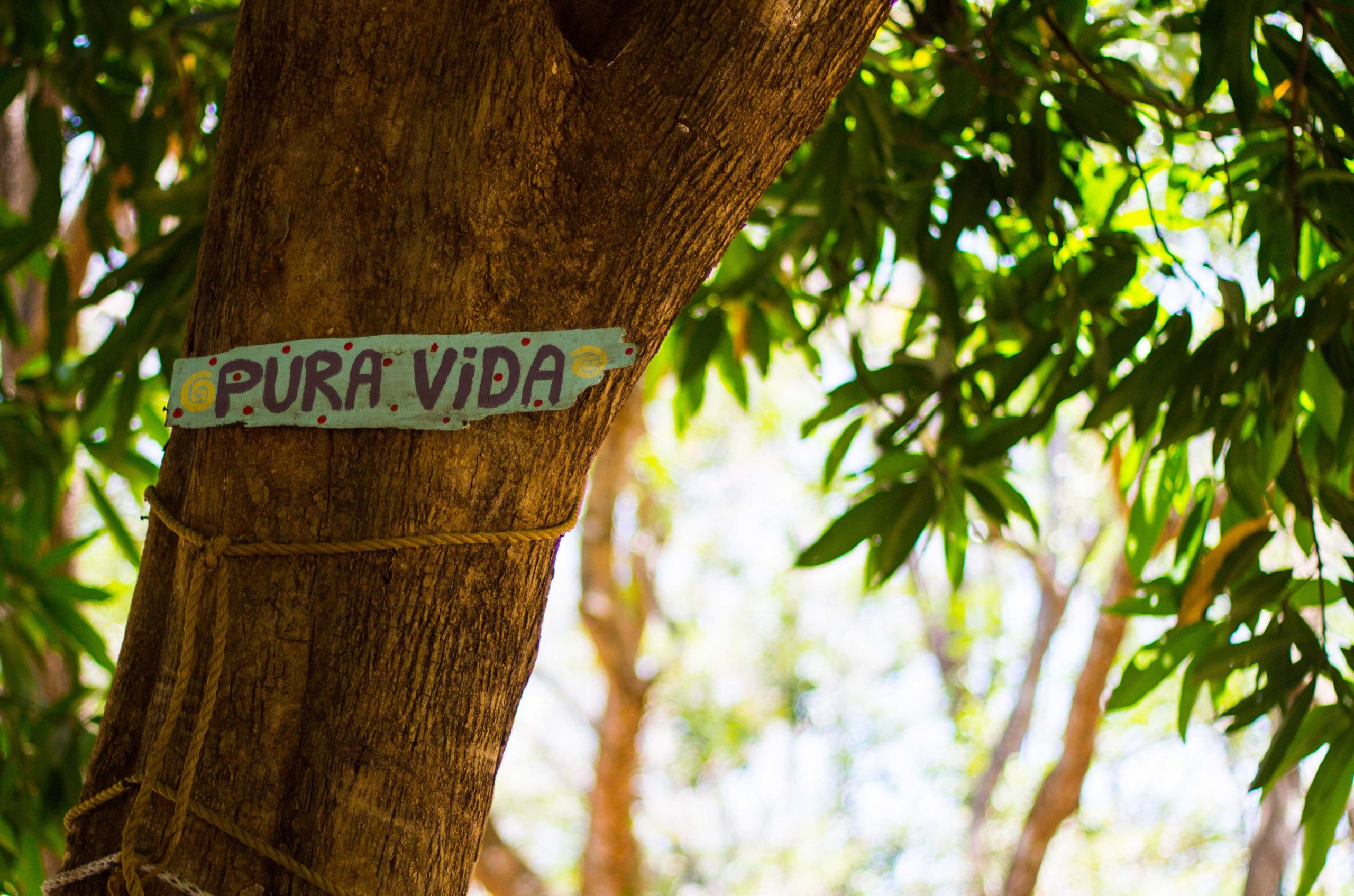
1. Visiting Local Markets
– San José’s Central Market: Offers a taste of local life with stalls selling everything from fresh produce to traditional Costa Rican meals.
– Artisan Markets: Various towns, such as Sarchí, are known for their handcrafted goods, including painted oxcarts and other traditional crafts.
2. Coffee and Chocolate Tours
– Coffee Plantations: Tours in regions like Monteverde and the Central Valley provide insight into the coffee-making process, from bean to cup, with tastings included.
– Chocolate Tours: Explore cacao farms and learn about the chocolate-making process, with opportunities to sample fresh, organic chocolate.
3. Cultural Sites and Museums
– San José Museums: The capital city offers several museums, including the National Museum, the Pre-Columbian Gold Museum, and the Jade Museum, which provide insights into Costa Rica’s rich history and culture.
– Historic Sites: Sites like the Guayabo National Monument offer a glimpse into the country’s pre-Columbian history.
The Ultimate Costa Rica Surf Guide – Water Activities
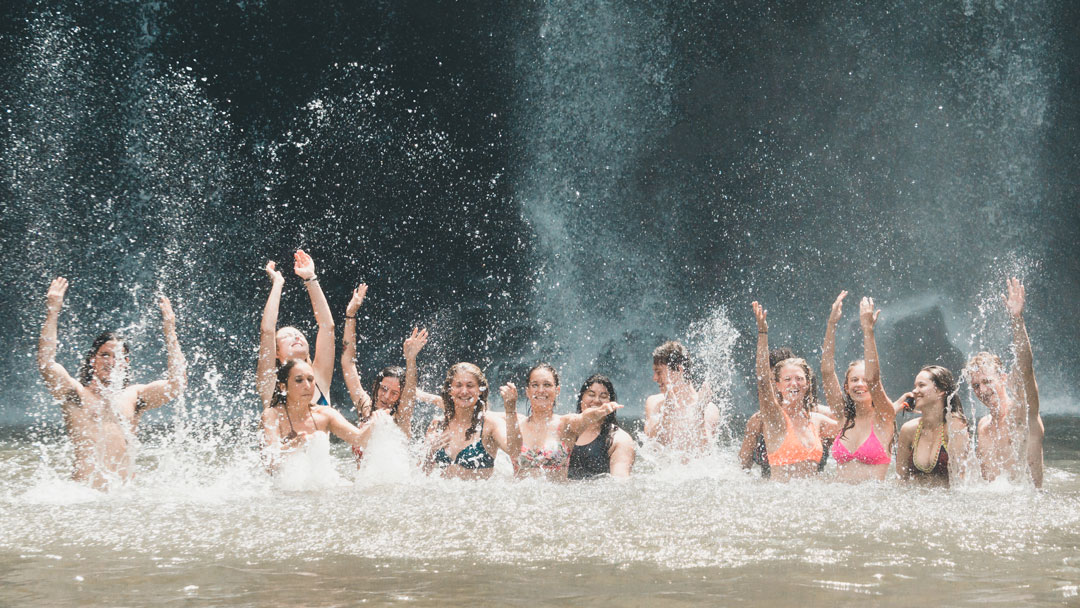
1. Snorkeling and Diving
– Caño Island: Renowned for its clear waters and diverse marine life, including rays, sharks, and tropical fish.
– Catalina Islands: Popular diving spots known for encounters with manta rays and other large marine species.
2. Fishing
– Sport Fishing: Costa Rica is famous for its world-class sport fishing, particularly in areas like Quepos, Tamarindo, and the Gulf of Papagayo, where you can catch marlin, sailfish, and tuna.
By exploring these activities, visitors can experience the rich diversity of Costa Rica’s natural beauty, adventure opportunities, and cultural heritage, making their trip memorable even when they’re not surfing.
CLICK TO GO BACK TO TOP OF PAGE
Frequently Asked Questions About Surf Camps
1. What should I bring to a surf camp?
Answer:
– Clothing: Swimsuits, rash guards, board shorts, and casual beachwear.
– Surf Gear: Most surf camps provide surfboards and wetsuits, but check in advance if you prefer to bring your own.
– Sun Protection: Sunscreen (reef-safe), a hat, sunglasses, and a long-sleeve rash guard.
– Personal Items: Toiletries, a reusable water bottle, a small first aid kit, and any necessary medications.
– Other Essentials: Beach towel, flip-flops, and a waterproof bag for valuables.
2. Do I need to have prior surfing experience to attend a surf camp?
Answer: No, surf camps cater to all skill levels, from complete beginners to advanced surfers. Camps typically offer lessons and guidance tailored to your experience level, ensuring you receive appropriate instruction and support.
3. What is typically included in a surf camp package?
Answer:
– Accommodation: Various options ranging from shared dorms to private tents or rooms.
– Meals: Often includes breakfast, lunch, and dinner, with some camps offering snacks and beverages.
– Surf Lessons: Daily surf lessons and coaching sessions.
– Equipment: Use of surfboards, wetsuits, and other necessary gear.
– Other Activities: Yoga sessions, excursions to nearby attractions, and social events.
4. How many surf lessons will I have per day?
Answer: Most surf camps offer 1-2 surf lessons per day, with additional free surf time where you can practice on your own. Some camps also include surf theory sessions and video analysis to help improve your technique.
5. What is the typical duration of a surf camp stay?
Answer: The duration varies, but common options include 1-week, 10-day, or 2-week packages. Many camps offer flexible booking options, allowing you to stay for shorter or longer periods depending on your preference.
6. Are surf camps suitable for families and kids?
Answer: Yes, many surf camps are family-friendly and offer programs tailored to kids and teens. These camps often provide family accommodations and activities suitable for all ages, ensuring a fun experience for everyone.
7. What if the weather conditions are not suitable for surfing?
Answer: Surf camps often have alternative activities planned in case of poor surfing conditions, such as yoga classes, cultural tours, hiking, and other outdoor adventures. Instructors may also conduct surf theory sessions or video analysis on non-surfing days.
8. Do I need to speak the local language?
Answer: While it’s helpful to know some basic phrases, it’s not necessary. Most surf camps cater to international guests and provide instruction in English. Many instructors and staff members are multilingual.
9. Is travel insurance necessary for attending a surf camp?
Answer: Yes, travel insurance is highly recommended. It should cover medical emergencies, accidents, trip cancellations, and lost or stolen belongings. Some surf camps may even require proof of insurance before you attend.
10. How physically demanding is a surf camp?
Answer: Surfing can be physically demanding, especially for beginners who are not accustomed to the movements and paddling involved. Surf camps typically cater to all fitness levels, providing rest breaks and alternative activities to ensure a balanced experience. It’s beneficial to have a basic level of fitness and swimming ability.
By addressing these frequently asked questions, you can better prepare for a surf camp experience, ensuring a smooth and enjoyable adventure in the waves.
CLICK TO GO BACK TO TOP OF PAGE
Dreamsea Surf Camp in Tamarindo offers an exceptional surfing experience in one of the world’s top-rated surf destinations. With its high-quality instruction, beautiful accommodations, and access to some of Costa Rica’s best surf spots, Dreamsea is an ideal choice for anyone looking to ride the waves and enjoy the natural beauty of this tropical paradise. Whether you are a seasoned surfer or a complete beginner, Dreamsea Surf Camp provides the perfect setting to hone your skills and soak up the vibrant surf culture of Costa Rica.
– CHECK OUT OUR SURF CAMP RATES HERE –
– BOOK YOUR DREAMSEA ADVENTURE HERE –
…. or you can simply fill out the book now form below if you are already familiar with Dreamsea Surf Camp Costa Rica

